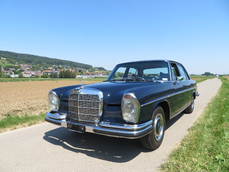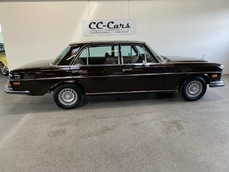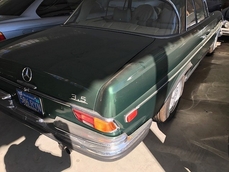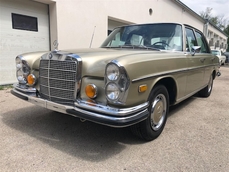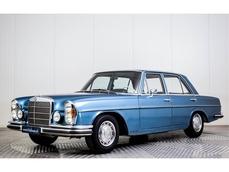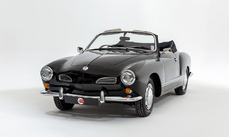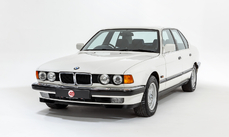Mercedes-Benz 280S/SE/SEL w108 280 SE 1972
General description :
Model History
The 280 SE was part of the W108 family of Mercedes-Benz, which was produced from 1965 until 1972. The line was an update of the predecessor W111 and W112 fintail saloons. The W108 premiered at the Frankfurt Auto Show in 1965. The initial model lineup consisted of three models; the 250 S, 250 SE, and 300 SE, as well as a sole W109, the 300 SEL. Engines for the new car were carried over from the previous generation, but enlarged and refined.
In late 1967 existing models were given an engine upgrade from the 2496cc M108 straight-six to the 2778cc M130. The W108 family now included the 280 S and 280 SE, both replacing the 2.5-litre variants. Bigger engines meant better performance. On the 280 S the two downdraft carburettors produced 140hp, while the fuel-injected 280 SE delivered 160hp and featured a new pump that was not affected by temperature or altitude. Thanks to the air oil filter and better arrangement of cylinders, cooling and also economy improved.
Equipment
Automatic transmission, Driver and passenger front armrests, Alpine CD player, Blaupunkt cassette radio (not fitted), Electric aerial, Rear armrest, Horn push ring, Lockable glove compartment, Front seatbelts, Cigar lighter, Front and rear ash trays, Interior lighting, Spare wheel, Mercedes tool roll.
Exterior
This handsome ‘70s saloon is in excellent condition throughout, perfectly in line with the low mileage of just 65k miles. The glistening Tunis Beige paintwork remains to a lovely standard and still presents with a sharp metallic flake – our studio photos really don’t do it justice. On closer inspection the plentiful brightwork appears original all round and is remarkably well preserved, the chrome still displaying a mirror shine with few signs of age. There are no nasty marks to the bumper trims and the light clusters are without any unsightly damage or moisture ingress. The dealer-supplied ‘peak’ plates are still fitted front and rear.
Interior
The dark MB-Tex upholstery is in excellent order with almost no wear to the seats at all. Wood trim adorns the fascia, dash top, and front window surrounds, all of which is still looking great with minimal patination. The footwell carpets are also in fine order and the headlining is free from any rips or sagging. There is no cracking or distortion to the dash and all the switchgear operates just as it should. An aftermarket Alpine head unit (not pictured) has recently been fitted for modern convenience but the period Blaupunkt cassette radio shown is also included with the sale.
ENGINE & TRANSMISSION
The 280 SE’s 2.8-litre M130 engine is fed by mechanical fuel injection, as opposed to that of the 280 S, which utilised twin carbs. The under-bonnet area of this example retains a very clean and tidy appearance, the engine having been serviced within the last 1k miles. This service work was accompanied by a light mechanical re-commissioning, all carried out by renowned marque specialist SS Motors.
WHEELS, TYRES & BRAKES
The Mercedes sits on 14-inch steels finished with the original body-coloured wheel covers. The painted/chrome embellishers are in great order and show only minor age-related wear to the outer rims. The aged Michelin tyres in the photographs have since been replaced with new Maxxis rubber all round.
History File
This UK 280 SE was first registered in January 1972; it was supplied new by Woking Motors in Hersham. Later that year it was sold by Walton Lodge Garage to its second owner. Mr Timmis drove the Mercedes up until November 1993, having always ensured the maintenance was kept up to date. In 1994 it was taken to Spain where it resided as part of a private collection until 2016. Upon arrival back into the UK the car was sold to the current owner by 4 Star. With the aim of putting it into more regular use some light re-commissioning was carried out by renowned Mercedes specialist, SS Motors. New tyres were also fitted, and a handful of additional parts have since been replaced.
The History File is complete with all the original handbooks, the dealer-supplied service booklet, plenty of past MOT certificates, the original warranty slip, period ownership documents, literature for the Blaupunkt radio, and several invoices for recent mechanical works. The MOT is valid until April 2020.
http://www.4starclassics.com/for-sale/mercedes-w108-280-se-for-sale/
1972 Mercedes-Benz 280S/SE/SEL w108 280 SE is listed sold on ClassicDigest in Kingsley by 4 Star Classics for £16995.
Car Facts
Car type : Car Make : Mercedes-Benz Model : 280S/SE/SEL w108 Model Version : 280 SE Engine size : 2.8 Model Year : 1972 Sub type : Pick up Location : Hampshire
Sold
Seller Information
Sold
People who viewed this Mercedes-Benz 280S/SE/SEL w108 also viewed similar Mercedes-Benz listed at ClassicDigest
Other cars listed for sale by this dealer
About Mercedes-Benz
In the annals of automotive history, the journey of Mercedes-Benz is a tale that unfolds with the ingenuity of its founding pioneers. In the year 1886, Karl Benz crafted the Benz Patent Motorwagen, a creation that would go down in history as the world's inaugural automobile. Unbeknownst to him, this moment marked the genesis of what would evolve into the most illustrious premium car manufacturer globally. The financial underpinning of this pioneering venture, interestingly, was provided by Karl Benz's wife, Bertha Benz, demonstrating a remarkable partnership that would set the tone for Mercedes-Benz's legacy.A parallel narrative emerged not far away, as Daimler-Motoren-Gesellschaft, founded by Gottlieb Daimler and Wilhelm Maybach, entered the scene. In 1901, they unveiled their automobile under the now-famous moniker "Mercedes," meaning "godsend" in Spanish. This name was bestowed upon the car at the behest of Emil Jellinek's daughter, the distributor for Daimler-Motoren-Gesellschaft. The wheels of innovation were set in motion.
Fast forward to 1926, a pivotal year that witnessed the merger of Daimler with Benz & Cie., culminating in the birth of Daimler-Benz. The amalgamation saw the adoption of "Mercedes-Benz" as the distinguished trademark for their automobiles, fusing the legacies of two visionary entities into one.
Contrary to perceptions of conservatism, the trajectory of Daimler-Benz unfolds as a chronicle of industry firsts. From the introduction of the honeycomb radiator to the float carburetor, and the pioneering implementation of four-wheel brakes in 1924, Daimler-Benz consistently pushed the boundaries of automotive innovation. The diesel-powered Mercedes-Benz 260 D in 1936 marked the inception of diesel engines in passenger cars. The iconic Mercedes-Benz 300SL Gullwing made history as the first car with direct fuel injection, albeit the Gutbrod's tiny 2-stroke engine can claim precedence.
Safety innovations became a hallmark, with Béla Barényi's patented safety cell design in the "Ponton"-models in 1951, featuring front and rear crumple zones. The W116 450SEL 6.9 saw the introduction of the Anti-Lock Brake system (ABS), another pioneering safety feature. From the first production airbags and beyond, the legacy of "firsts" continued to be etched into the fabric of Daimler-Benz.
Over its centennial journey, Mercedes-Benz has not merely produced cars but has sculpted automotive icons. The SSKL, 710 SSK Trossi Roadster, 770K Grosser, 540K Spezial Roadster, 300SL Gullwing, w100 600 Pullman, w111 280SE 3.5 Flachkühler, w113 230SL Pagoda, w109 300 SEL 6.3, and w201 2.3-16 Cosworth stand testament to the brand's commitment to engineering excellence.
The roaring Silver Arrows, or "Silberpfeile," including the W 25, W 125, W154, W165, and W196, created a legacy of dominance on the racetrack. These machines were not merely cars; they were expressions of precision, speed, and an indomitable spirit that left their competitors in the dust.
As Mercedes-Benz marches into the future, it does so not just as an automaker but as a custodian of a legacy, a torchbearer of innovation, and a beacon of automotive excellence. The road ahead is sure to witness the continued fusion of cutting-edge technology, timeless design, and an unwavering commitment to setting new standards in the world of automobiles.
One luminary figure who left an indelible mark was Béla Barényi, often heralded as the "father of passive safety" for his pioneering work in safety engineering. His patented safety cell design, featuring front and rear crumple zones, became a hallmark of Mercedes-Benz's commitment to occupant safety, setting new standards that reverberated throughout the automotive world.
Moving through the chronicles, the collaborative genius of Wilhelm Maybach, alongside Gottlieb Daimler, laid the foundation for Daimler-Motoren-Gesellschaft. Their innovations not only birthed the first Mercedes but established a culture of relentless pursuit of technological excellence that remains integral to Mercedes-Benz's DNA.
In the post-merger era of 1926, Ferdinand Porsche emerged as a prominent figure within Mercedes-Benz. His work on the Mercedes-Benz S-Type, a supercharged race car, garnered acclaim and set the stage for a legacy that extended far beyond the marque. Porsche's impact would later extend to his eponymous company, but his influence at Mercedes-Benz during those formative years was pivotal.
As the 20th century progressed, the legendary Rudolf Uhlenhaut emerged as a key figure. Uhlenhaut, an accomplished engineer and the driving force behind the iconic Silver Arrows, played a crucial role in Mercedes-Benz's dominance in motorsports. His engineering prowess and attention to detail were instrumental in creating some of the most formidable racing cars of the era.
In the latter half of the century, figures like Bruno Sacco, the head of design at Mercedes-Benz from 1975 to 1999, left an indelible imprint on the brand's aesthetic identity. Sacco's design philosophy, characterized by clean lines and timeless elegance, shaped iconic models like the W126 S-Class and the W201 190E, solidifying Mercedes-Benz's reputation for luxury and sophistication.
The narrative would be incomplete without acknowledging the contributions of engineers like Hans Scherenberg, whose leadership in the 1970s ushered in a new era of technological innovation at Mercedes-Benz. Scherenberg's tenure saw the development of groundbreaking technologies, including the Anti-Lock Brake system (ABS) and the introduction of airbags in production cars.


